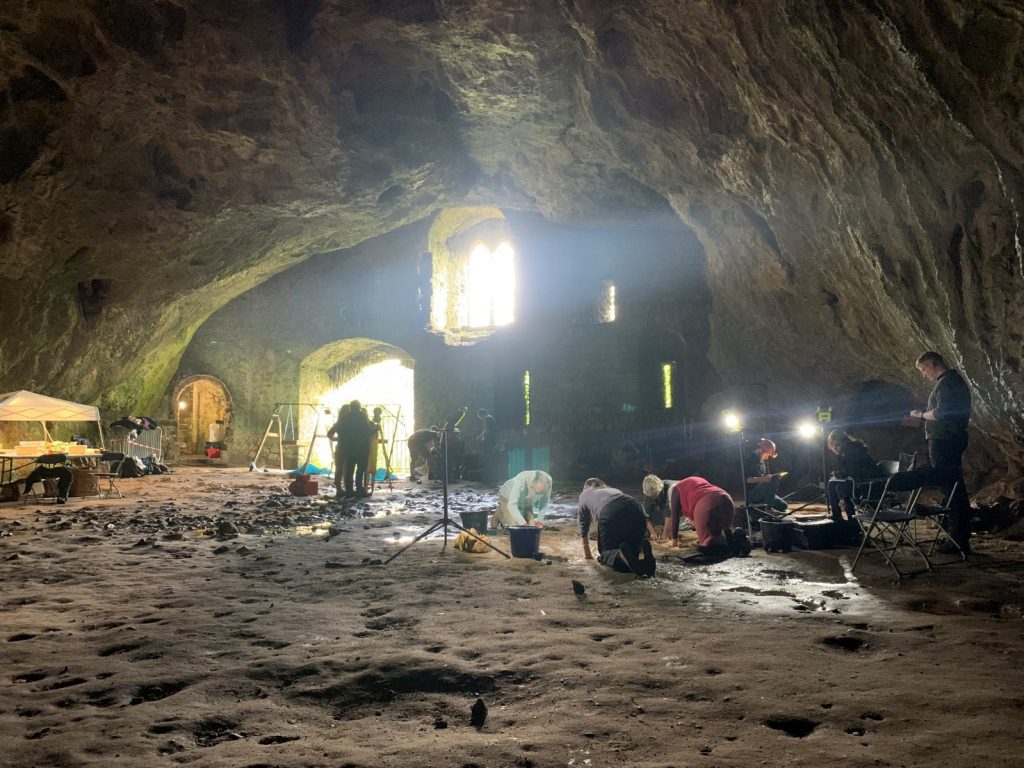Buried in a bat-ridden cave beneath a Welsh castle, archaeologists have uncovered extremely early evidence of prehistoric humans. Dating to the last Ice Age, the objects left by these people suggest they were among the very first Homo sapiens to dwell in Britain.
The discovery was made during ongoing excavations at Wogan Cavern beneath Pembroke Castle in southwest Wales. Due to the treasure trove of artifacts found here, which detail thousands of years of history, it’s been called the one of “most important archaeological caves in Britain.”
The mouth of the cave was shut off by a wall built around 800 years ago, although it’s still accessible thanks to a spiral stairway from the castle above. It most likely served as a storeroom during the Middle Ages, while artifacts found in the cave show it was used throughout the Roman period.
Most intriguingly, there is strong evidence to suggest it was inhabited by Mesolithic hunter-gatherers during the middle of the last Ice Age. While prehistoric human skeletons have not yet been found at the site, analysis of stone tools found during the 2022 dig confirms that the tools found here were crafted by some of the earliest Homo sapiens to come to Britain.
Alongside the tools, they also uncovered the bones of reindeer, wild horses, and woolly mammoth, suggesting this cave was the site of a prehistoric butcher shop-cum-dining hall.

Excavations in Wogan Cavern, underway in summer 2022.
Image credit: R. Dinnis
Given the scale of the cave, this latest discovery could just be the start of things to come. Remarkably little is known about when Homo sapiens arrived in Britain and how they lived. We know even less about the history of Neanderthals, the close cousins of Homo sapiens, in Britain.
With more excavations at Wogan Cavern set for summer 2023, it’s hoped some questions about this pivotal period in human history will be answered.
“Wogan Cavern is turning out to be a remarkable site. We’re sadly lagging behind our European neighbours in understanding the first local appearances of Homo sapiens, but the discovery of a new site can change that. We can now use modern archaeological methods to learn much more about this crucial period. When exactly did these people come to Britain, where did they come from, and how did they live in their Ice Age environments? These are all questions we can now try to answer, thanks to this incredible cave,” Dr Rob Dinnis, an archaeologist from the University of Aberdeen who is co-leading the project, said in a statement.
“Our work has already shown that Wogan Cavern is an extremely important site, but the most intriguing thing is how much we’ve found given how little we’ve excavated. It’s a big cave, and we’ve barely scratched the surface.”
“Who knows what else we might find in coming years? Could there be evidence for even earlier occupation, by our Neanderthal cousins? Given what we’ve found so far, I certainly wouldn’t rule it out,” added Dinnis.
Source Link: Cave Beneath A Welsh Castle Reveals Extremely Rare Early Evidence Of Humans In Britain